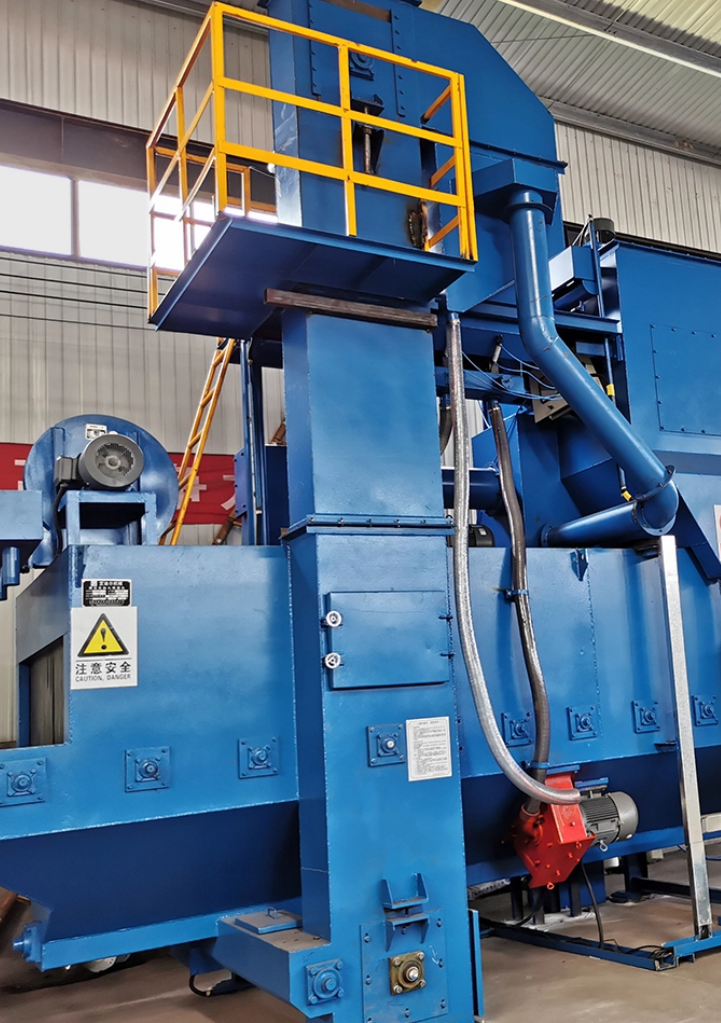Future of Efficient Mesh Welding Technology: Automation and Intelligent Equipment
- Introduction
- Background of mesh welding technology
- Limitations of traditional welding meods
- The rise of automation and intelligent equipment
- Theme Analysis: How Automation and Intelligent Equipment Revolutionize Mesh Welding Technology
- Wire mesh welding machine
- Technical advantages of automation equipment
- Core features of intelligent equipment
- Synergy between automation and intelligent systems
- Guide: How to Select and Apply High-Efficiency Mesh Welding Equipment
- Choosing the right type of equipment
- Key points for installation and debugging
- Tips to improve welding efficiency
- Tutorial: Practical Steps to Build a Modern Mesh Welding Production Line
- Step 1: Define production requirements and equipment types
- Step 2: Select suitable automation equipment
- Step 3: Optimize production processes and train operators
- Step 4: Monitor data and maintain equipment
- Case Studies: Applications of Automated Mesh Welding Equipment
- Efficient welding in construction engineering
- Flexible production line transformations in industrial manufacturing
- Success stories of intelligent systems in mass production
- Conclusion and Outlook
- Current status and future trends in automation and intelligent technology
- The role of mesh welding in industrial upgrading
Main Article
Introduction
Mesh welding technology is widely used in construction, industrial manufacturing, and agriculture. However, traditional welding processes often face challenges such as low efficiency, inconsistent quality, and high labor costs, making it difficult to meet modern production demands. The rapid development of automation and intelligent equipment is reshaping the field, offering new opportunities for technological innovation in mesh welding.
Theme Analysis: How Automation and Intelligent Equipment Revolutionize Mesh Welding Technology
- Technical Advantages of Automation Equipment
Automated mesh welding equipment utilizes robotic arms or servo systems to perform precise welding tasks. Its primary benefits include:- High Efficiency: Continuous operation significantly increases production speed.
- Consistency: Ensures uniform welds and stable quality.
- Safety: Reduces manual intervention, lowering workplace risks.
- Core Features of Intelligent Equipment
Intelligent equipment integrates sensors, artificial intelligence, and big data analytics, enabling advanced functionalities:- Real-Time Monitoring: Tracks parameters like current and voltage to ensure optimal welding results.
- Fault Diagnosis: Detects and resolves equipment issues promptly, minimizing downtime.
- Production Optimization: Leverages data analytics to adjust welding parameters and enhance product quality.
- Synergy Between Automation and Intelligent Systems
The combination of automation and intelligent technology elevates mesh welding to new levels of precision and efficiency. For example, intelligent algorithms can optimize welding paths, reducing material waste while boosting equipment productivity.
Guide: How to Select and Apply High-Efficiency Mesh Welding Equipment
- Choosing the Right Type of Equipment
- Semi-Automatic Welders: Suitable for small and medium enterprises due to lower costs and higher flexibility.
- Fully Automatic Welders: Ideal for large-scale production with high efficiency and simplicity.
- Intelligent Welding Systems: Designed for complex welding tasks requiring advanced automation.
- Key Points for Installation and Debugging
- Ensure the installation site meets requirements, such as stable power supply and adequate space.
- Fine-tune welding parameters, including current, voltage, and speed, to match different materials.
- Implement necessary safety measures to protect operators and equipment.
- Tips to Improve Welding Efficiency
- Regularly clean welding heads and sensors to prevent malfunctions caused by dust accumulation.
- Adjust welding paths according to production needs to optimize runtime.
- Utilize intelligent monitoring functions to adjust parameters and improve welding precision.
Tutorial: Practical Steps to Build a Modern Mesh Welding Production Line
- Define Production Requirements and Equipment Types
Determine the parameters and scale of production. For example, construction-grade reinforcement mesh requires high-strength welding, while industrial mesh focuses on precision. - Select Suitable Automation Equipment
- Prioritize equipment with modular designs to accommodate future needs.
- Consider brand reputation, after-sales service, and cost-performance ratio.
- Optimize Production Processes and Train Operators
- Adjust production line layouts to ensure smooth material flow and minimize downtime.
- Provide training for operators to familiarize them with equipment functionality and safety protocols.
- Monitor Data and Maintain Equipment
- Use data platforms to monitor production in real-time and quickly identify anomalies.
- Develop a maintenance schedule, including routine inspections and cleaning of welding heads, to ensure long-term equipment stability.
Case Studies: Applications of Automated Mesh Welding Equipment
- Efficient Welding in Construction Engineering
A construction company adopted fully automated rebar mesh welding machines, increasing daily production by 40% while ensuring stable weld quality to meet the demands of large-scale projects. - Flexible Production Line Transformations in Industrial Manufacturing
An industrial manufacturer utilized intelligent welding systems to achieve efficient production of multiple small-batch products, significantly reducing setup costs. - Success Stories of Intelligent Systems in Mass Production
A mesh manufacturer implemented smart welding equipment, achieving a weld consistency rate of over 99%, boosting product quality, and winning more client orders.
Conclusion and Outlook
Automation and intelligent equipment are driving mesh welding technology into a new era. These advancements enhance production efficiency, improve product quality, and accelerate the industry’s transition to smart manufacturing.
As artificial intelligence, big data, and the Internet of Things continue to evolve, mesh welding equipment will become even more efficient and intelligent, providing robust technical support for global manufacturing.
By effectively leveraging high-efficiency equipment, businesses can better compete in the market, promote industrial upgrading, and embrace the benefits of technological innovation.

声明:本网站所有文章来源于转发,仅供阅读,仅代表原作者观点,不代表本网站立场;如内容有侵权、违规,版权等可直接反馈本站邮箱3307846825@qq.com,我们将会在看到信息后作删除处理。
本文的链接地址: http://2019811.top/archives/17202
 IE财经网
IE财经网
还没有任何评论,你来说两句吧